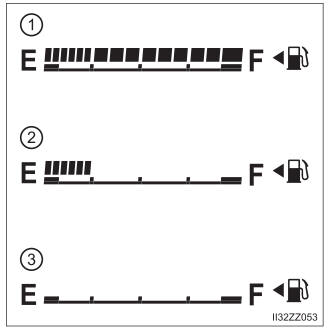Toyota Yaris: Rear Combination Light Assembly / Inspection
INSPECTION
PROCEDURE
1. INSPECT STOP LIGHT LED (for LH Side)
(a) Check that the stop light LED.
| (1) Apply auxiliary battery voltage to the stop light LED and check that the light comes on. OK:
If the result is not as specified, replace the stop light LED. |
|
2. INSPECT STOP LIGHT LED (for RH Side)
(a) Check that the stop light LED.
| (1) Apply auxiliary battery voltage to the stop light LED and check that the light comes on. OK:
If the result is not as specified, replace the stop light LED. |
|
3. INSPECT TAIL LIGHT LED (for LH Side)
(a) Check that the tail light LED.
| (1) Apply auxiliary battery voltage to the tail light LED and check that the light comes on. OK:
If the result is not as specified, replace the tail light LED. |
|
4. INSPECT TAIL LIGHT LED (for RH Side)
(a) Check that the tail light LED.
| (1) Apply auxiliary battery voltage to the tail light LED and check that the light comes on. OK:
If the result is not as specified, replace the tail light LED. |
|
5. INSPECT REAR TURN SIGNAL LIGHT LED (for LH Side)
(a) Check that the rear turn signal light LED.
| (1) Apply auxiliary battery voltage to the rear turn signal light LED and check that the light comes on. OK:
If the result is not as specified, replace the rear turn signal light LED. |
|
6. INSPECT REAR TURN SIGNAL LIGHT LED (for RH Side)
(a) Check that the rear turn signal light LED.
| (1) Apply auxiliary battery voltage to the rear turn signal light LED and check that the light comes on. OK:
If the result is not as specified, replace the rear turn signal light LED. |
|
 Disassembly
Disassembly
DISASSEMBLY CAUTION / NOTICE / HINT HINT:
Use the same procedure for the RH and LH sides.
The procedure listed below is for the LH side.
PROCEDURE 1...
 Reassembly
Reassembly
REASSEMBLY CAUTION / NOTICE / HINT HINT:
Use the same procedure for the RH and LH sides.
The procedure listed below is for the LH side.
PROCEDURE 1...
Other information:
Toyota Yaris XP210 (2020-2025) Reapir and Service Manual: Barometric Pressure - Turbocharger / Supercharger Boost Sensor "A" Signal Compare Failure (P00CF62)
DESCRIPTION At ignition switch to ON or during idling, the No. 2 turbo pressure sensor and the atmospheric pressure sensor built into the ECM are at atmospheric pressure and their outputs match. DTC No. Detection Item DTC Detection Condition Trouble Area MIL Note P00CF62 Barometric Pressure - Turbocharger / Supercharger Boost Sensor "A" Signal Compare Failure 15 kPa [2...
Toyota Yaris XP210 (2020-2025) Owner's Manual: Cup Holder
WARNING Never use a cup holder to hold hot liquids while the vehicle is moving Using a cup holder to hold hot liquids while the vehicle is moving is dangerous. If the contents spill, you could be scalded. Do not put anything other than cups or drink cans in cup holders Putting objects other than cups or drink cans in a cup holder is dangerous...
Categories
- Manuals Home
- Toyota Yaris Owners Manual
- Toyota Yaris Service Manual
- Engine & Hybrid System
- Key Battery Replacement
- Headlights
- New on site
- Most important about car
Fuel Gauge
The fuel gauge shows approximately how much fuel is remaining in the tank when the ignition is switched ON. We recommend keeping the tank over 1/4 full.







